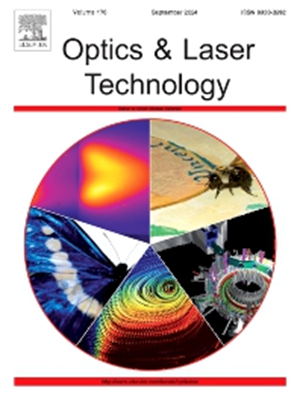A dual channel-cross fusion network for polarization image fusion
IF 4.6
2区 物理与天体物理
Q1 OPTICS
引用次数: 0
Abstract
Polarization image fusion utilizes images with different polarization directions to generate fused images containing rich texture information and intensity information. Typically, the addition or concatenation operations are usually used in fusion methods, while these approaches are ineffective in merging the features from different source images. Therefore, a dual channel-cross fusion network for polarization image fusion is proposed, termed as DCCFNet. The network has two main modules: feature extraction & fusion module and generation module. Feature extraction & fusion module has two main branches, which are used to extract the features of the polarization images. In each branch, a squeeze-and-excitation based (SE-based) block is used to obtain the global information distribution of the feature maps within the channel dimension. To better fuse the features from different source images, a cross-fusion branch is proposed to connect the two branches and interleave the feature maps across the channel dimension. Also, a spatial attention (SA) block is employed to capture the key regions of the images. Generation module is used to generate the fused images from features. In addition, a loss function that integrates weighted structural similarity index measure (MSWSSIM) loss, intensity loss and gradient loss is developed to preserve more structural and intensity information from the source images and enhancing the clarity of target edges. The results of the experiments on two public datasets have proved the effectiveness and advancement of our proposed method.
求助全文
约1分钟内获得全文
求助全文
来源期刊
CiteScore
8.50
自引率
10.00%
发文量
1060
审稿时长
3.4 months
期刊介绍:
Optics & Laser Technology aims to provide a vehicle for the publication of a broad range of high quality research and review papers in those fields of scientific and engineering research appertaining to the development and application of the technology of optics and lasers. Papers describing original work in these areas are submitted to rigorous refereeing prior to acceptance for publication.
The scope of Optics & Laser Technology encompasses, but is not restricted to, the following areas:
•development in all types of lasers
•developments in optoelectronic devices and photonics
•developments in new photonics and optical concepts
•developments in conventional optics, optical instruments and components
•techniques of optical metrology, including interferometry and optical fibre sensors
•LIDAR and other non-contact optical measurement techniques, including optical methods in heat and fluid flow
•applications of lasers to materials processing, optical NDT display (including holography) and optical communication
•research and development in the field of laser safety including studies of hazards resulting from the applications of lasers (laser safety, hazards of laser fume)
•developments in optical computing and optical information processing
•developments in new optical materials
•developments in new optical characterization methods and techniques
•developments in quantum optics
•developments in light assisted micro and nanofabrication methods and techniques
•developments in nanophotonics and biophotonics
•developments in imaging processing and systems

 求助内容:
求助内容: 应助结果提醒方式:
应助结果提醒方式:


